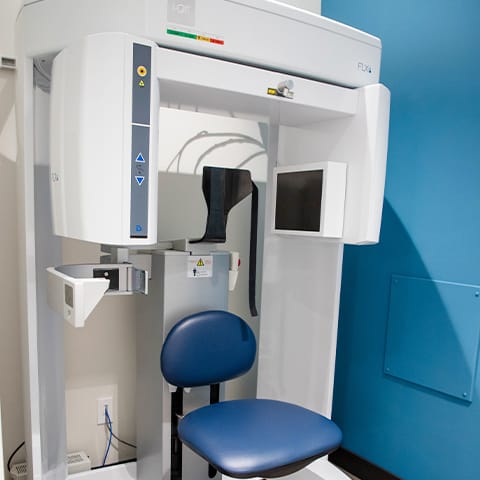Improve the Look & Health of Your Smile
Our team is proud to offer services to help repair damaged or missing teeth and restore the appearance and function of your smile. We want to help improve your ability to chew, speak, and smile with confidence.
Visit us for your restorative dentistry needs. Schedule an appointment with your dentist today.
Book AppointmentThe Benefits of Restorative Dentistry
Restorative dentistry is the process of replacing missing teeth or repairing damaged teeth.
When you visit us for a restorative dental procedure, our goal is to improve your natural smile and protect your teeth from future health issues. By choosing restorative dentistry, we can:
- Maintain the function of your teeth
- Preserve bone strength
- Avoid pain and discomfort
- Enhance the look of your smile
Common Restorative Dental Services
Restorative dentistry encompasses a number of procedures including fillings, crowns, bridges, dental implants, and inlays and onlays. Learn more about each of these restorative services.
Fillings
Fillings treat cavities by removing decay and filling the area to protect the tooth. A dental filling can also be used to repair cracked or broken teeth.
There are different types of filling materials with different advantages. Your dentist can assess your teeth and oral health to determine what filling material is right for you.
Crowns
A dental crown, or cap, is a hollow, artificial tooth that your dentist cements to your natural tooth. The purpose of a crown is to protect a damaged tooth and restore its function and appearance.
Bridges
Dental Implants
If a tooth needs to be removed due to damage or decay, a dental implant can replace the natural tooth to restore your smile.
A dental implant is secured to the jawbone by a metal anchor. This anchor replaces the natural root. Once in place, the anchor attaches to an artificial tooth to hold it in place.
Inlays & Onlays
An inlay is a filling that has been pre-moulded to fit into the grooves of your teeth. Inlays are often used to treat cavities that are found in the centre of your tooth.
An onlay can also be referred to as a partial crown. It is used to treat damage found between the teeth or on the cusps of the teeth.
Restore the Beauty of Your Smile
Restorative dentistry keeps your teeth and mouth healthy, giving you a long-lasting, radiant smile. If your teeth have been damaged and need repair, trust our experienced team to improve the appearance and function of your smile.
Schedule your next dental exam today.
Book AppointmentCome Visit Us

You can find us just off 50 Street, with plenty of parking available in front of the clinic. Look for our beautiful Bloom sign!
Our Address
- 6209 50 St., #201
- Leduc, AB T9E 7A9
Contact Us
- Phone: 780-612-9762
- Email: info.ortho@bloomdentistry.ca
Clinic Hours
- Monday: 8:00 AM – 4:00 PM
- Tuesday: 8:00 AM – 4:00 PM
- Wednesday: 8:00 AM – 4:00 PM
- Thursday: 8:00 AM – 4:00 PM
- Friday: 8:00 AM – 4:00 PM
- Saturday: By Appointment
- Sunday: Closed





























